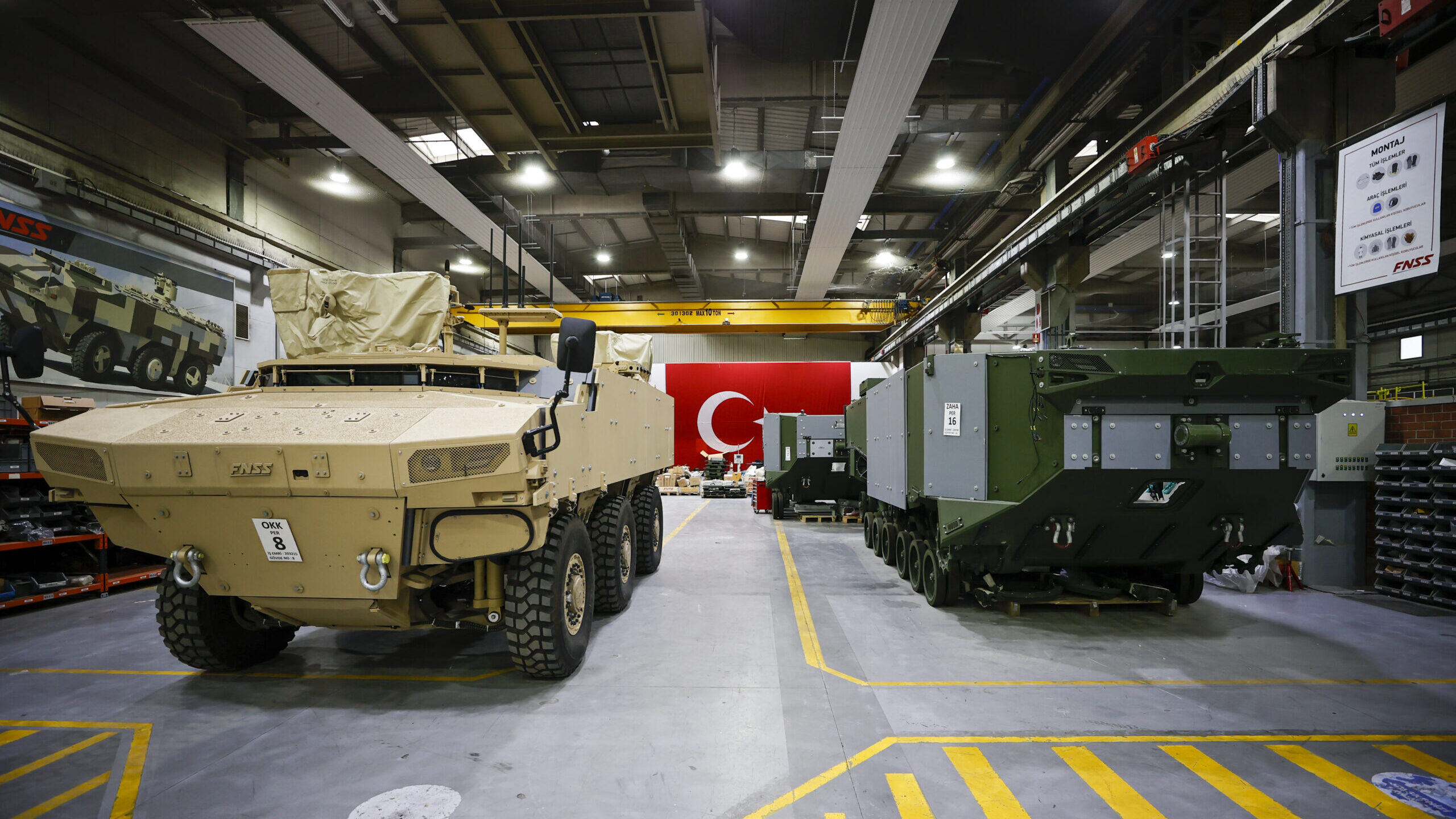U.S. Marine Corps Gen. Eric M. Smith gives a speech at the Marine Corps War Memorial in Arlington, Va. on Feb. 23, 2023. (U.S. Marine Corps photo by Lance Cpl. Alfonso Livrieri)
WASHINGTON — In his newly released Commandant’s Planning Guidance, Marine Corps Gen. Eric Smith re-affirmed his service’s commitment to the future-looking Force Design effort, including a pledge to “make all necessary investments” towards maintaining the service’s amphibious ships and their associated forces amidst “finite” resourcing.
“I remain confident that we are on the right track as a service. Force Design remains a righteous journey, and we are in perhaps the most difficult phase — implementation,” Smith wrote in the document published today.
“Accepting near-term risk for long-term gain has, and always will be, the essence of Force Design,” Smith continues later in the document when discussing the need to balance funding between future modernization and current operational requirements.
The Commandant’s Planning Guidance is a broad, forward-looking document, designed to give the service chief a chance to address the entire Marine Corps and lay out their vision and priorities.
Historically, the document is published soon after the new commandant assumes his position, but Smith’s CPG was delayed, first, by a political impasse on Capitol Hill — he was not permitted to publish a CPG while serving as the acting commandant, despite his nomination to the job — and then by a medical emergency that sidelined him from work for several months.
His affirmation of Force Design is not surprising. As the assistant commandant to the previous Marine Corps chief, Gen. David Berger, Smith played an integral role in devising and implementing the plan’s earliest steps and has been a fierce public advocate for Berger’s ideas — despite the public criticism from retried officers as well as the fact his ascension to commandant gave him free reign to take the service in another direction, if desired.
Berger first publicly unveiled his ideas for Force Design 2030 in his own CPG published in 2019. The Marine Corps has since abbreviated “Force Design 2030” to just “Force Design” in recognition of the fact the changes and adaptations for future conflict will not necessarily conclude at the end of this decade.
“We have a finite budget and each of the services must make hard decisions to prioritize resources to prepare for the future fight,” Smith’s guidance states. “The Marine Corps has many competing requirements, all of which are important. We must sequence our investments over time, applying capital when and where it makes the most difference. Simultaneously, we must sustain the hard work that led to a clean audit for the service.”
One of the costliest budget items for the Marine Corps are its amphibious ships and the forces deployed on them, also called the Amphibious Ready Group/Marine Expeditionary Unit. In his new guidance, Smith characterizes the ARG/MEU as the “premiere force offering of our Corps” and said he’ll spare no expense to “keep it that way.”
A major goal is to maintain a “3.0 requirement” for the combatant commanders, which means “heel-to-toe” deployments of one MEU from the East Coast, West Coast and forward-deployed naval forces in Japan. (“Heel-to-toe” in this case means that as one ARG/MEU departs a region to head home, another is simultaneously beginning its own deployment, ensuring a constant presence.) The goal is in line with the service’s historical policies, but it has remained a challenge in recent years to realize it in practice.
Smith also alludes to the fact that, in order to meet that goal, the bottom line may require more money from lawmakers. In addition to highlighting the importance of amphibious ships, Smith also calls out capabilities focused on contested logistics and littoral mobility; joint and coalition command and control as well as long-range precision fires.
While not called out in the guidance, Smith’s document indicates that there is no interest in reversing the Marines’ movement away from tanks or other changes Berger made. The decision to divest tanks, advocated heavily by Berger, has been one of the most controversial aspects of the Force Design debate.
“To meet the material and personnel readiness goals associated with a 3.0 MEU requirement, the United States Navy will likely require increased resources across multiple Future Years Defense Programs (FYDP),” Smith wrote.











